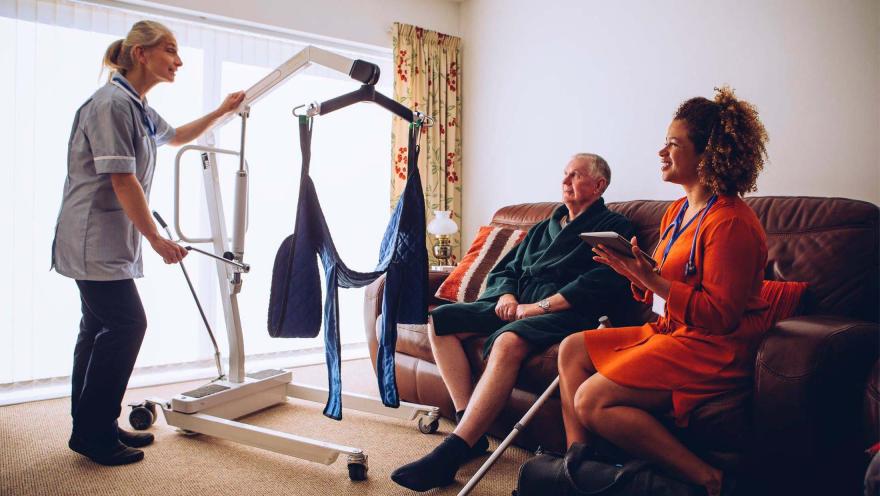This is the last in a four-part series highlighting a new Association video series exploring mobility changes people living with ALS face, created to help initiate discussions between individuals living with the disease, their family members, and their care team, and to assist families with planning and informed decision making.
Decreasing mobility is a challenge faced by every person living with ALS at some point in their disease journey. Finding ways to help people maintain their independence and prevent potential harms caused by everyday living activities is a priority for the ALS community while we continue to search for new treatments and a cure.
On a recent Connecting ALS podcast episode, Maintaining Mobility, we sat down with Shannon Terrell, Doctor of Physical Therapy at the Kaiser ALS clinic in Colorado to learn more about her experience treating people living with ALS and get her thoughts about how she helps her patients manage their mobility.
“I think mobility is such a big part of just living your life, getting from A to B, being able to accomplish your activities of daily living, or “ADLs” as we say in short,” she said. “And there’s so many ways to make mobility easier, more efficient, less energy expenditure, safer to prevent falls and things like that.” Shannon shared valuable information about the types of equipment and technologies available today, the importance of being proactive in decision making and the many professionals to turn to for help and expertise in planning for future mobility changes.
Shannon also participated in The ALS Association’s new educational videos addressing this particularly important topic. Recognizing the need for more information and resources for the families we serve, the Association developed this comprehensive series to help address the questions and concerns people living with ALS and their families often have.
The series spotlights real conversations between people living with ALS, mobility experts and health-care professionals who address everything from understanding the many equipment options available to advice for tackling everyday tasks and activities and modifying your home.
In addition to the videos, the Association provides a wide variety of resources on our website, including informational factsheets to share tips and advice for dressing with ease and comfort, minimizing fatigue and equipment to make everyday life easier. Prerecorded educational webinars can also be viewed covering additional home modification strategies and smart home technologies to utilize. And our free downloadable Living with ALS Resource Guide, Functioning When Mobility is Affected by ALS, serves as a valuable tool for learning everything there is to know about mobility and living with ALS.
“There's just so many different options, and so many ways to make sure that we keep your mobility on a day-to-day basis safe, because, ultimately, we want you to live your life to the fullest,” says Shannon. “We want you to do the things you want to do. We want you to save energy doing it so you can have enough energy for all the things that you want to do.”
Additional information regarding mobility changes and ALS can be obtained from your physician, physical and occupational therapists and your health care team. Your local ALS Association chapter can provide educational resources and a referral to an ALS Association Certified Treatment Center of Excellence.
To continue to learn more about ALS and follow stories about people living with the disease in the community, follow our blog at ALS.org/blog.


Join the conversation. Please comment below.